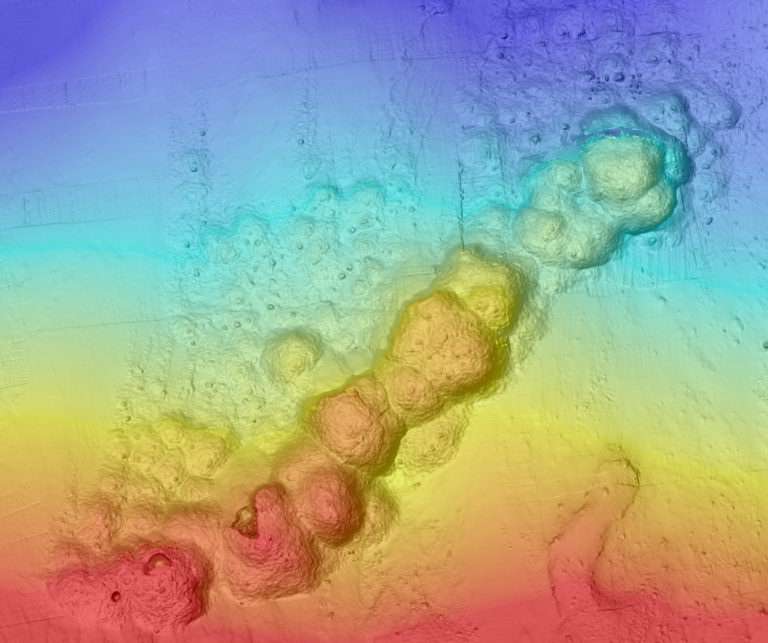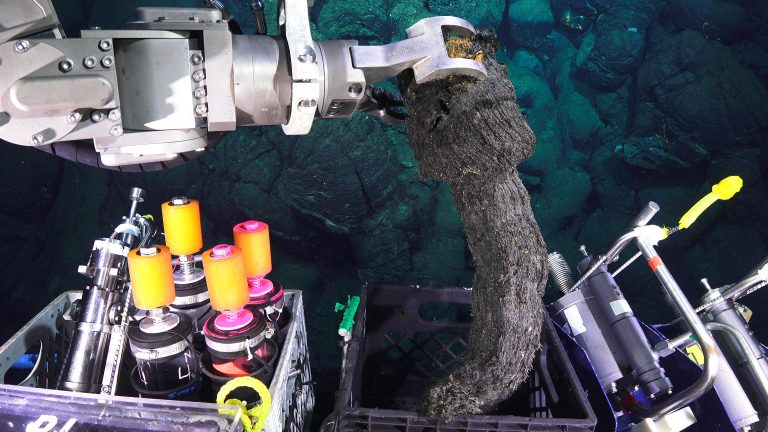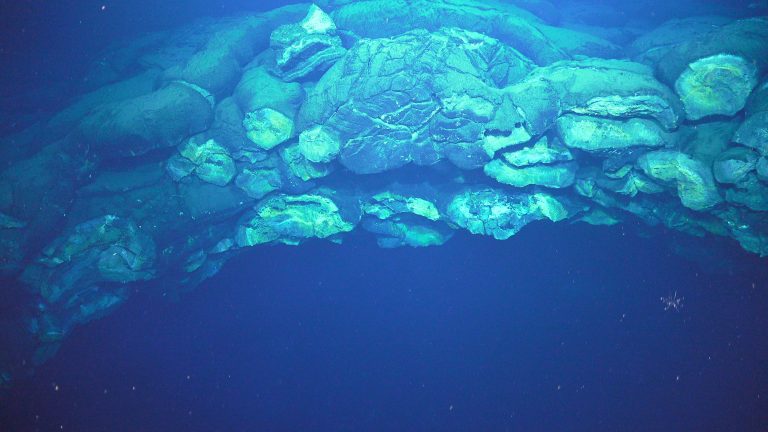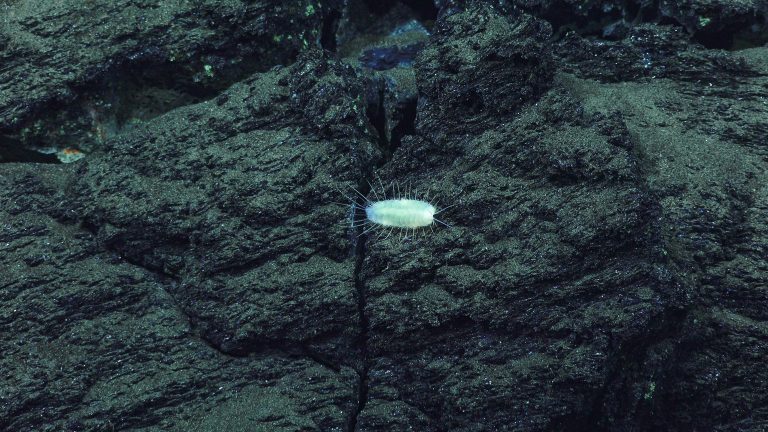On ROV SuBastian’s Dive S93 we visited West Mata volcano, where we know multiple eruptions have occurred over the last decade from before-and-after bathymetric surveys. These eruption sites are scattered all over the volcano – some near the summit and others low on the flanks. One of our main goals on this expedition has been to explore many of these sites, observing the variety of eruption styles at different depths, sampling the lavas (to see if their composition has changed with time or location), and seeing if they had an explosive phase as well as creating lava flows. All these observations can help us learn about how submarine volcanoes work and how they impact the deep sea.
Location, Location, Location
Dive S93 explored one of these recent eruption sites on the NE flank of West Mata. We know it appeared between surveys in 2012 and 2016, and this location is unusual for the volcano because most of its eruptions have been either on the summit or one of its two rift zones. However, this site is on the NE flank of the volcano, well off the rift zone. In the high-resolution map we made with AUV Sentry (on the first leg of this expedition), it stands out against the smooth northern slope of the volcano as a hummocky ridge which are mounds of pillow lava.

Dripping Pillows
We approached the ridge from downslope and found that it had a wide apron of thin pillow lava flows downslope from the steep-side, haystack shaped mounds. The thin flows on the margin also seemed to have more ash deposited on them than the lavas at the top of the pillow mounds. We think that reflects a sequence of events, with the eruption starting with an explosive phase, followed by thin pillow flows that were emplaced when the eruption rate was a bit higher (so they could spread out faster and thinner), followed by the construction of the steep-sided mounds directly over the eruptive fissure at a lower eruption rate (so the lava solidified and piled up closer to the vent). As the ROV climbed up the nearly-vertical sides of the steep pillow mounds, we saw long pillow lava tubes that looked like drips of wax on the sides of a candle. We were able to sample one of those pillow lava drips.

Craters & Scaleworms
Two of the shallowest pillow mounds along the ridge have craters in the tops, and ROV SuBastian was able to go down inside them to have a look around. One had an overhanging rim, and on the inside wall we could see a cross-section of the inside of the mound, consisting of layer upon layer of truncated pillows. These collapse craters confirm that the interior of many pillow mounds like these have molten interiors as they grow upwards and outwards.
Throughout the dive we saw many white scaleworms that are a species that live only at hydrothermal vents, swimming above the seafloor or sitting on the rocks. We did not see any active hydrothermal venting, but the presence of the scaleworms (and occasional cloudy water) shows that this recent eruption site is still a little warm and must still have a little venting coming out, at least locally. It is amazing to see how well adapted hydrothermal vent animals are and that they can find these new eruption sites, colonizing them quickly, even though the venting is destined to only last a few years. On the other hand, West Mata is so active, it will not be long until the next eruption!



